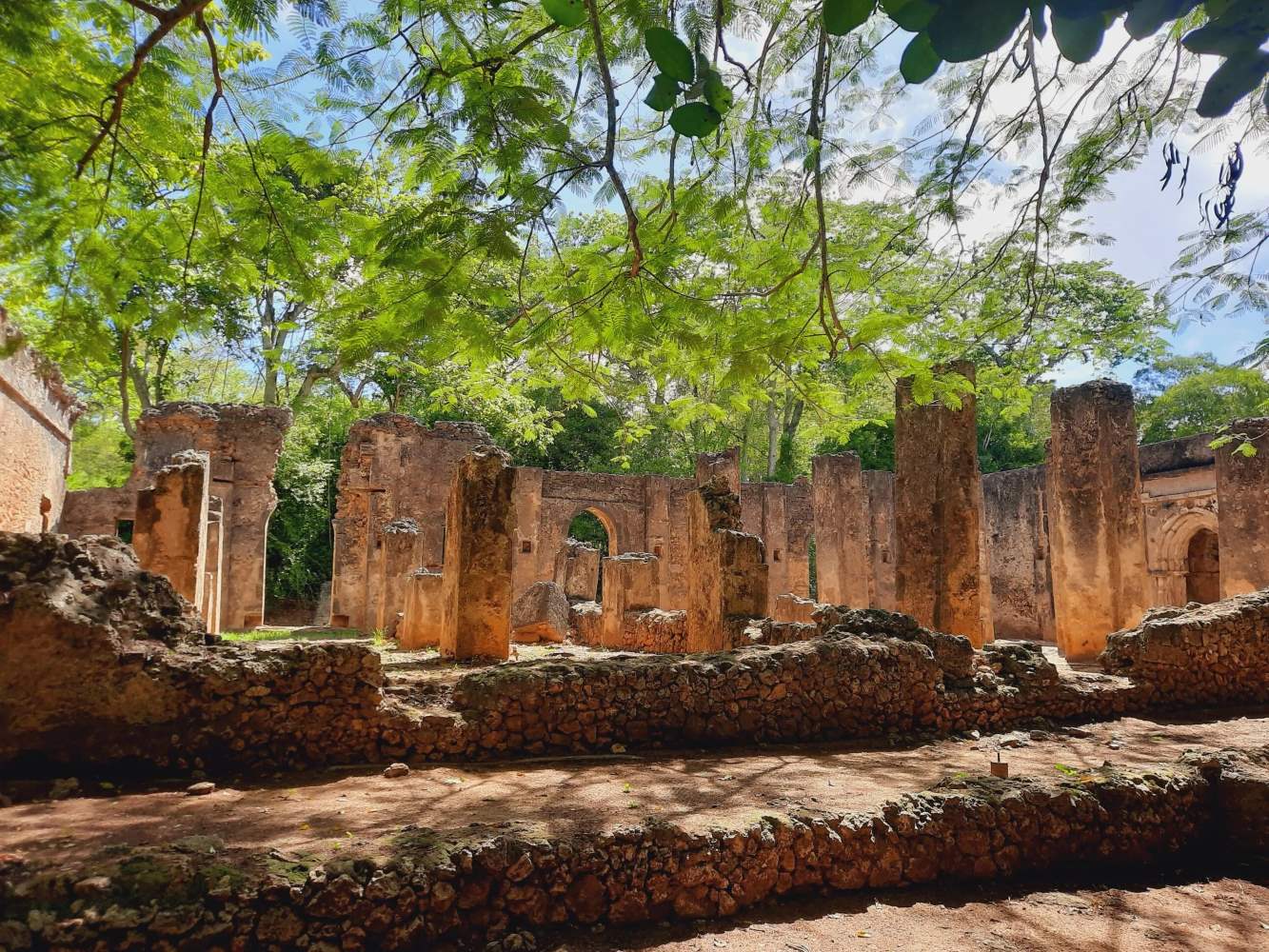
Gedi Ruins is an ancient Swahili town located in Kenya, shrouded in mystery and history. This archaeological site, dating back to the 13th century, offers a glimpse into the lives of the Swahili people. Why did the inhabitants abandon Gedi Ruins? Theories range from Portuguese invasions to shifts in trade routes. The ruins feature a palace, mosques, and houses, showcasing advanced architecture and urban planning. What makes Gedi Ruins unique? The site includes a sophisticated drainage system and coral stone structures. Visitors often marvel at the intricate designs and the lush forest surrounding the ruins. Ready to learn more? Dive into these 18 intriguing facts about Gedi Ruins.
18 Facts about Gedi Ruins
The Gedi Ruins, located in Kenya, are a fascinating historical site that offers a glimpse into a once-thriving Swahili town. These ruins are shrouded in mystery and intrigue, making them a captivating subject for history buffs and curious minds alike. Let's dive into some intriguing facts about this ancient site.
The Location and Discovery
The Gedi Ruins are nestled within a lush forest near the Indian Ocean coast, providing a picturesque backdrop to this ancient site.
-
Gedi Ruins are located in the Arabuko-Sokoke Forest in Kenya. This forest is one of the largest coastal forests in East Africa, teeming with diverse wildlife and plant species.
-
The ruins were first discovered in the 1920s. Although local tribes knew of the site, it wasn't until the 1920s that archaeologists began to study it extensively.
Historical Significance
The Gedi Ruins hold immense historical value, shedding light on the Swahili culture and their way of life.
-
Gedi was a thriving Swahili town from the 13th to the 17th century. The town was a bustling center of trade and culture during this period.
-
The town was mysteriously abandoned in the 17th century. Despite its prosperity, Gedi was suddenly deserted, and the reasons remain unknown.
Architectural Marvels
The ruins showcase impressive architectural feats that highlight the ingenuity of the Swahili people.
-
The town had advanced plumbing systems. Gedi featured sophisticated water wells and drainage systems, indicating a high level of engineering knowledge.
-
Coral stone was the primary building material. The structures were built using coral stones, which were abundant in the coastal region.
Cultural Insights
Exploring the Gedi Ruins offers a window into the cultural practices and daily life of its inhabitants.
-
Artifacts found include Chinese porcelain and Venetian glass. These items suggest that Gedi was part of a vast trade network that extended to Asia and Europe.
-
The town had a mosque, palace, and several houses. These structures indicate a well-organized community with religious, administrative, and residential areas.
Mysteries and Legends
The Gedi Ruins are surrounded by numerous legends and unanswered questions that continue to intrigue researchers.
-
Local legends speak of a curse that led to the town's abandonment. Some believe that a curse or supernatural event caused the residents to flee.
-
No written records of Gedi have been found. The absence of written documentation adds to the mystery of the town's history and demise.
Preservation Efforts
Efforts have been made to preserve and protect the Gedi Ruins for future generations to explore and learn from.
-
The site was declared a National Monument in 1927. This designation helped protect the ruins from further damage and neglect.
-
Archaeological excavations continue to this day. Researchers are still uncovering new artifacts and information about the town's history.
Flora and Fauna
The surrounding forest adds another layer of interest to the Gedi Ruins, with its rich biodiversity.
-
Arabuko-Sokoke Forest is home to rare bird species. Birdwatchers can spot species like the Sokoke Scops Owl and Clarke's Weaver.
-
The forest also hosts endangered mammals. The Golden-rumped Elephant Shrew and Ader's Duiker are among the rare animals found here.
Visitor Experience
Visiting the Gedi Ruins offers a unique and enriching experience for tourists and history enthusiasts.
-
Guided tours are available for visitors. Knowledgeable guides provide insights into the history and significance of the ruins.
-
The site includes a small museum. The museum displays artifacts and provides additional context about the town's history.
Modern Connections
Despite being centuries old, the Gedi Ruins have connections to modern times and continue to inspire interest.
-
The ruins have been featured in documentaries and films. Their mysterious allure makes them a popular subject for media.
-
Gedi Ruins are a UNESCO World Heritage Site candidate. Efforts are underway to gain this prestigious recognition, which would further protect and promote the site.
Gedi Ruins: A Glimpse into the Past
Gedi Ruins offer a fascinating peek into a once-thriving Swahili town. Nestled in Kenya's coastal forest, these ruins tell stories of a vibrant community that thrived between the 13th and 17th centuries. From the grand mosque to the intricate coral stone houses, each structure whispers secrets of a bygone era. The advanced plumbing system and the presence of Chinese porcelain and Venetian glass hint at Gedi's extensive trade connections. Visiting Gedi Ruins isn't just a walk through history; it's a journey through time that showcases the ingenuity and resilience of its inhabitants. Whether you're a history buff or just curious, Gedi Ruins provide a captivating experience that leaves you pondering the mysteries of this ancient town. So next time you're in Kenya, make sure to step back in time and explore the wonders of Gedi Ruins.
Was this page helpful?
Our commitment to delivering trustworthy and engaging content is at the heart of what we do. Each fact on our site is contributed by real users like you, bringing a wealth of diverse insights and information. To ensure the highest standards of accuracy and reliability, our dedicated editors meticulously review each submission. This process guarantees that the facts we share are not only fascinating but also credible. Trust in our commitment to quality and authenticity as you explore and learn with us.


